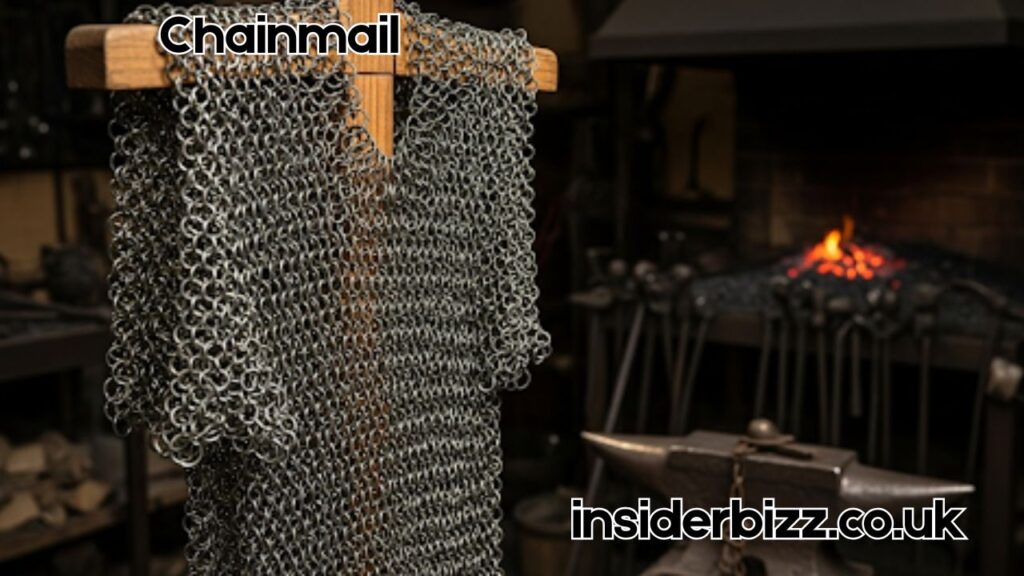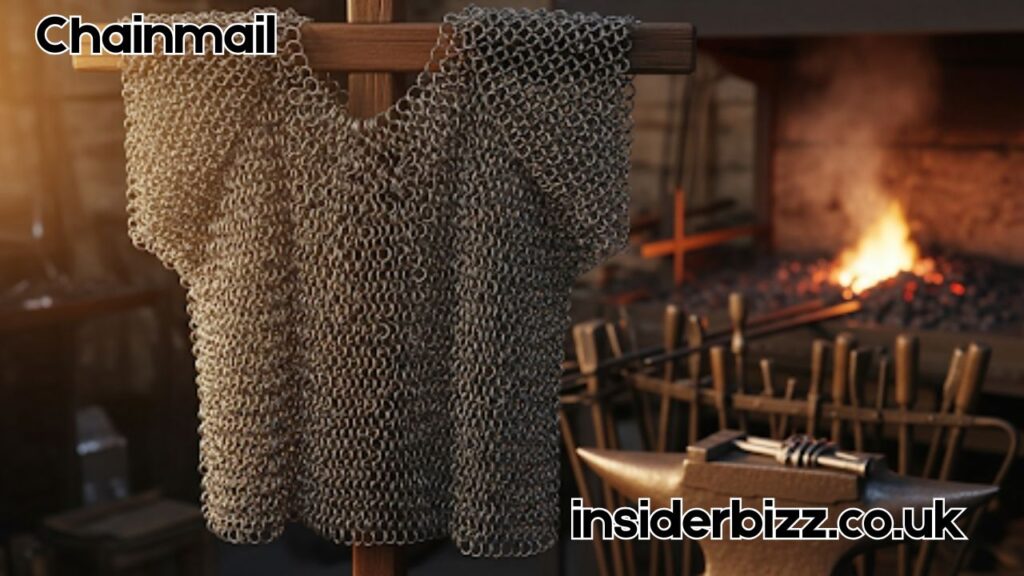
Chainmail: History, Craftsmanship, and Modern Uses
Introduction to Chainmail
Chainmail is one of the most iconic forms of armor in human history, recognized for its interlinked rings and metallic shine. Originating over 2,000 years ago, chainmail has evolved from ancient battlefield protection to modern fashion, art, and even scientific research. This article explores the origins, techniques, and many uses of chainmail, revealing its lasting significance and cultural appeal.
The Origins of Chainmail

The earliest known forms of chainmail appeared around the 3rd century BCE, likely developed by the Celts in Europe. Its effectiveness in combat quickly caught the attention of other civilizations, including the Romans, who adopted and adapted it for their legions. Known as “lorica hamata” in Latin, Roman chainmail offered both flexibility and durability, making it superior to rigid armor types in many battlefield scenarios.
How Chainmail Is Made
Traditional chainmail consists of small metal rings, often made from iron or steel, linked together in a pattern that resembles a mesh. The most common pattern is the 4-in-1 weave, where each ring connects to four others. Crafting chainmail involves coiling wire into spirals, cutting individual rings, and painstakingly linking them together. Historically, this process could take weeks or even months, depending on the size and complexity of the armor.
Chainmail in Medieval Warfare
During the Middle Ages, chainmail became the standard form of body armor for knights and soldiers across Europe. Suits of mail were often worn under or alongside plate armor for additional protection. A full set of chainmail—called a hauberk—could cover the torso, arms, and sometimes the legs. Helmets with mail aventails (neck protection) were common among high-ranking warriors. Despite the weight, chainmail allowed for greater movement than rigid plate armor.
Chainmail Beyond Europe
While often associated with medieval Europe, chainmail was also used in other cultures. In the Middle East, warriors wore “zirh gomlek,” a form of chainmail tunic, sometimes paired with lamellar or scale armor. In India, the Mughal Empire used chainmail in combination with silk padding for added comfort and effectiveness. Japanese samurai also incorporated mail elements (kusari) into their armor to protect vulnerable areas while maintaining mobility.
The Decline of Chainmail in Battle
By the late 15th century, advances in weaponry—especially firearms—rendered chainmail less effective in combat. Plate armor became more prevalent due to its superior resistance to gunpowder-based attacks. Eventually, chainmail was phased out of mainstream military use. However, it continued to serve ceremonial purposes and remained a symbol of status and tradition among elite warriors.
Chainmail in Modern Reenactments
Today, chainmail is a staple in historical reenactments, medieval fairs, and live-action role-playing (LARP) events. Enthusiasts spend hours crafting historically accurate chainmail armor, sometimes even using traditional tools and materials. These efforts help preserve ancient techniques and keep the legacy of chainmail alive in popular culture.
Chainmail in Fashion and Jewelry
In recent decades, chainmail has made a bold appearance in the world of fashion. Designers have used it in avant-garde clothing lines, evening dresses, and accessories. Fashion icons like Lady Gaga and Beyoncé have donned chainmail outfits on stage and red carpets. Jewelry artists also use fine-gauge rings to create bracelets, earrings, and necklaces—bringing chainmail from the battlefield to the runway.
Chainmail in Film and Pop Culture
Movies and TV shows such as Lord of the Rings, Game of Thrones, and The Witcher have renewed interest in chainmail, portraying it as both functional and stylish. Costume designers use aluminum or plastic versions for lightweight realism on camera. These portrayals have helped shape modern perceptions of medieval life and armor, making chainmail synonymous with heroic fantasy and epic storytelling.
Scientific and Industrial Applications of Chainmail
Surprisingly, chainmail has found its way into science and industry. Engineers and scientists study chainmail-like structures to design flexible armor, medical devices, and impact-resistant materials. NASA has even developed a space-age version of chainmail for protective insulation on spacecraft. The same qualities that made chainmail effective in war—flexibility, durability, and adaptability—are now being used in cutting-edge technology.
Chainmail in Art and Sculpture
Many artists use chainmail as a medium for sculpture and installation. The mesh structure allows for intricate shapes and fluid designs, blurring the line between textile and metalwork. Art galleries and exhibitions around the world feature chainmail pieces that reflect on themes of protection, history, and transformation.
The Resurgence of DIY Chainmail
The rise of the maker movement has led to a resurgence of interest in DIY chainmail crafting. Hobbyists can now buy starter kits online, complete with rings, pliers, and instructions. Whether crafting armor, jewelry, or decorations, people of all ages find the process meditative and rewarding. The craft of chainmail offers a tactile connection to the past while allowing for endless modern expression.
Chainmail and Gender Representation
While historically worn by male warriors, chainmail in the modern era has become a symbol of strength and empowerment for all genders. Female cosplayers, reenactors, and artists use chainmail to challenge stereotypes and reclaim space in traditionally male-dominated narratives. The visual power of chainmail as armor continues to inspire those who wear it, both literally and metaphorically.
Ethical and Environmental Aspects
Unlike many synthetic materials, traditional chainmail is fully recyclable and long-lasting. Artisans often use recycled metals to create eco-conscious works. In this way, chainmail aligns with modern sustainability values, offering an ethical approach to craft and fashion.
Chainmail in Museums and Collections
Many museums across the world feature chainmail in their collections. From the Metropolitan Museum of Art in New York to the British Museum in London, visitors can see original hauberks, coifs, and gauntlets preserved from centuries past. These exhibitions provide educational insights into metallurgy, warfare, and daily life during historical periods.
The Symbolism of Chainmail
Beyond its physical function, chainmail symbolizes protection, resilience, and unity. The interconnected rings represent strength through cooperation—a metaphor adopted by various movements and artists. In a world where vulnerability and defense coexist, chainmail remains a powerful emblem of fortitude and design.
Chainmail as a Teaching Tool
Educators use chainmail to teach students about physics, mathematics, and history. The structure of chainmail introduces concepts like tessellation, load distribution, and material science. It’s also used in workshops and classrooms to foster hands-on learning and interdisciplinary thinking.
Cultural Events and Chainmail Competitions

Worldwide, festivals and conventions host chainmail-themed competitions, showcasing craftsmanship in armor, jewelry, and costume design. Events like Renaissance fairs or Comic-Con often feature panels and workshops where experts teach the techniques behind historical and artistic chainmail.
Chainmail in Digital Worlds
In video games such as Minecraft, Elden Ring, and The Elder Scrolls, chainmail is often the first form of armor players acquire. Its representation in digital spaces preserves its legacy and introduces it to new generations. Game developers often design digital chainmail with realistic textures and historical accuracy.
The Future of Chainmail
Looking ahead, chainmail is likely to remain relevant not just as a historical artifact, but as a source of inspiration across disciplines. Whether in the lab, the runway, or the battlefield of imagination, chainmail continues to evolve. Its enduring utility and visual appeal ensure that chainmail will remain part of human culture for centuries to come.



